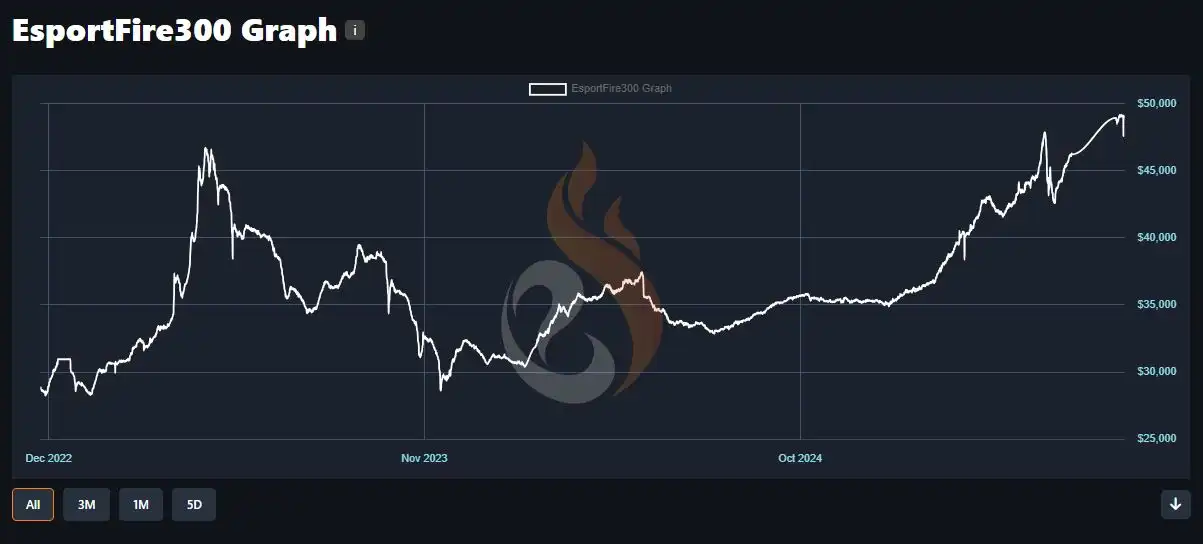Cupid's Hookup Guide
Unlock the secrets to modern dating with our insightful tips and advice.
When Skin Trading Ecosystems Go Bust: A Deep Dive into the Digital Chaos
Explore the chaotic downfall of skin trading ecosystems and uncover the secrets behind their rise and devastating bust. Don't miss out!
The Rise and Fall of Skin Trading: What Went Wrong?
The rise of skin trading in the gaming community marked a significant evolution in how players interacted with virtual goods. Initially celebrated for its innovative approach to monetization, skin trading allowed gamers to buy, sell, and trade unique in-game items, creating a vibrant marketplace driven by player demand. Platforms like Steam and various third-party websites facilitated this phenomenon, offering players the opportunity to turn their virtual assets into real-world currency. However, the allure of profit and the potential for fraud quickly overshadowed the community spirit that skin trading originally fostered.
As the popularity of skin trading peaked, it garnered scrutiny from gaming companies and regulatory bodies alike. Issues such as gambling concerns, exploitation, and fraud became rampant, leading to a backlash against unregulated platforms. Many gamers found themselves victims of scams or addiction, prompting developers to implement stricter regulations. Subsequently, this shift contributed to the fall of skin trading as a legitimate marketplace, with increased transparency and tighter controls hindering the freedom that had once defined the practice. In hindsight, the decline of skin trading serves as a cautionary tale of how quickly a vibrant community can be diminished by unchecked greed and exploitation.

Counter-Strike is a popular tactical shooter game that has captured the attention of gamers worldwide since its initial release in 1999. With its competitive gameplay and strategic team dynamics, the franchise has evolved over the years, leading to significant changes in the eSports landscape. Recently, the community has been discussing the implications of the market cap crash cs2, which has raised concerns among players regarding the future of the game.
Understanding the Impact of Market Crashes on Digital Goods
The world of digital goods, which includes everything from e-books to software and digital currencies, is not immune to the effects of market crashes. Typically, a market crash leads to an increase in economic anxiety among consumers, prompting them to cut back on discretionary spending. This trend often results in a decline in sales of non-essential digital goods. For instance, during the 2008 financial crisis, many digital content creators observed a significant dip in demand as consumers prioritized essential goods and services over digital entertainment. Moreover, the volatility of digital assets such as cryptocurrencies can lead to rapid fluctuations in price, affecting both consumer confidence and the perceived value of these digital products.
However, it's important to note that the impact of market crashes on digital goods can vary significantly depending on the type of product and the market segment. Gaming and streaming services, for example, have shown resilience during economic downturns as people seek affordable home entertainment options. Additionally, the rise of remote work and digital learning, accelerated by the COVID-19 pandemic, has increased the demand for productivity software and educational digital goods even during market volatility. Understanding these dynamics is crucial for businesses and marketers in the digital goods sector to adapt their strategies effectively in response to changing market conditions.
Is Skin Trading Sustainable? Analyzing the Future of Virtual Economies
The phenomenon of skin trading has significantly influenced virtual economies, particularly within gaming environments. As players engage in skin trading, they buy, sell, and exchange virtual items, often leading to substantial financial transactions. However, the sustainability of this practice is under scrutiny. Many experts argue that while it creates a vibrant marketplace, it also risks destabilizing the economy of the game. Market fluctuations can be sharp, leading to significant financial losses for players who invest heavily in rare skins. These economic instability concerns raise questions about the long-term viability of skin trading as a sustainable model.
Looking toward the future, the sustainability of skin trading may hinge on regulatory measures and the evolution of blockchain technology. As more games incorporate decentralized assets, the potential for ownership and value retention could increase, minimizing the risks associated with speculative trading. Additionally, developers must consider the ethical implications and potential market manipulation that can arise from unregulated trading platforms. In conclusion, whether or not skin trading will remain sustainable will depend on how both the industry and players adapt to these challenges, highlighting the delicate balance between innovation and economic stability within virtual economies.